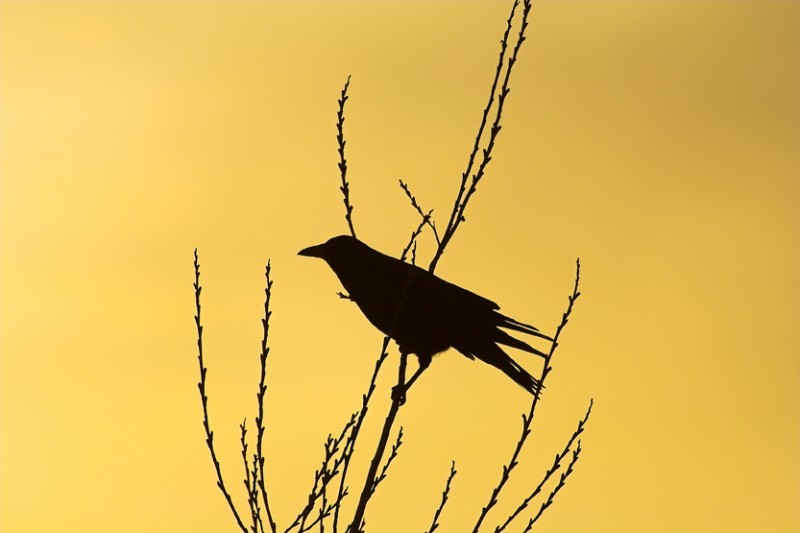Crows on Campus
ISU workers estimate that 10,000 to 15,000 crows migrate to Ames every year, and the ISU campus has an environment conducive to the birds’ lifestyle. The workers use a variety of techniques to lessen the effects of such a large population of crows.
April 5, 2011
Whether it’s the noise or the mess on the sidewalks, the large population of crows on campus is a nuisance ISU Facilities Planning and Management has to deal with.
“They’re a nuisance in a lot of places, often times people do want them dispersed because they make a mess on the sidewalks,” said William Clark, professor in ecology, evolution and organismal biology.
Crows can be a potential host for diseases, such as avian influenza and West Nile virus. The risk of students being exposed to the disease is minimal, but the dust particles from the droppings still have a potential risk for those diseases, Clark said.
“The primary concern that we have if there’s crow droppings is that we don’t want to work around droppings if it’s dry. If we were to create a dust, potential hazards in the droppings would be in that dust and you can inhale that,” said Robert Currie, director of Facilities Planning and Management.
On top of cleaning the sidewalks, the department tries several different approaches to scare the crows away, ranging from crow distress calls to inflatable scarecrows.
“We have tried the inflatable owl eyes that are placed in trees, [and] we do a lot of the crow distress calls, where a hawk is grabbing one of the crows and it puts out a distress call to warn other crows,” said Lester Lawson, manager of facilities maintenance. “We have an inflatable scarecrow that inflates on top of the roof, so if you have a building where all the crows go to a roof, this thing will inflate frequently.”
Other attempts including shooting laser beam lights at the crows, and clapping together boards to imitate the sound of a shotgun going off.
“Crows are a very smart animal, and they quickly adapt to changes in their environment,” Currie said. “If we have something there that is scaring them and if we just leave it there, they’ll become accustomed to it.
“What [Lawson] and his staff have to do is mix up their approaches. At one point they may be doing the distress bird call; they may change that to bright, flashing lights.”
Crows are known to be scavengers, and besides being very adaptive, crows can harass other bird species.
“Crows are kind of a scavenger, predator; they do consume eggs of other birds, they do consume nestlings of other birds, they have an impact on some populations,” Clark said.
Crows are abundant in population and an agricultural pest, feeding on the corn crops and soy beans available in Ames.
The reason for so many crows on campus is that they use the campus for a roost. It’s a protected area and it’s warm, and most of the crows are migrating through or there are crows that would spread out across the landscape. They go out during the day and feed on the corn crops and then they come back to places like campus or downtown Ames, Clark said.
“Campus is a good place because there’s lots of big trees and places for them to roost,” Clark said.
“We expect about [10,000] to 15,000 crows that migrate to Ames each year,” Currie said.
With the large number migrating to campus each year, Facilities Planning and Management runs short on options when mitigating the crow population.
“It’s every year. Once you get a new batch in, you’ve got to start early, deter them from coming on campus and if you catch them early, it works for awhile, but pretty soon they’re used to what you’re doing and there’s nothing you can do short of shooting them to get them to move,” Lawson said.
For Lawson and Clark, the idea of shooting crows is not acceptable, both socially and logistically.
“The best way for people to cope with them is to just enjoy the crows, being knowledgeable about the fact that why they’re here — they like the campus surroundings, there’s big trees, it’s a warmer location,” Clark said.
Each semester, Facilities Planning and Management attempts to scare off the crows, monitoring new ways to mitigate the population in hopes to keep this feathered nuisance to a minimum.

















